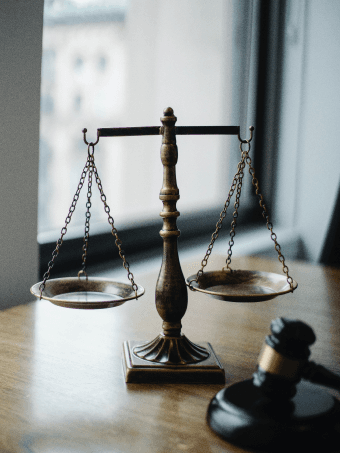
There is an inherent risk in filing a trademark application
With well over 213.65 million companies [1] and 64.4 trademarks registered across the world [2], the notion of one’s brand name being 100% unique is truly naive. Since trademark registration protects its owner against both identical and similar brands, the inherent risk in trademark registration needs to be acknowledged. In other words, even if the trademark to be registered is unique in the sense that no identical trademark has been previously registered, the owners of similar trademarks can utilise their right to oppose the new application.
Strategies to maximise chances of a successful trademark registration
Risk assessment, mitigation and acceptance are therefore crucial elements of a trademark registration process. The potential risk of office actions or oppositions raised against new applications can be however minimised by relying on three particular strategies:
In-depth assessment of eligibility criteria
Selection of goods and services, taking into consideration potentially conflicting trademarks
Preparedness for potential office actions and / or oppositions
Carrying out a thorough assessment for eligibility criteria
There are two main eligibility criteria for a successful registration of a trademark. The first revolves around distinctiveness and descriptiveness. Essentially, a registered trademark needs to display a sufficient level of distinctiveness to differentiate a company’s products and services from the competitors. This means that highly descriptive brand names, such as Napoli Pizza or Fastest Car, will be rejected by the intellectual property office.
The second eligibility criteria is related to a similarity screening, exploring the level of similarity to the trademark already registered. All owners of registered trademarks have the priority right to oppose new applications and as such, if the new application is identical or very similar as to create a consumer confusion, an opposition is likely to arise.
Understanding the extent to which the brand name meets these eligibility criteria provides the very basis for avoiding costly mistakes in attempting trademark registrations that are virtually certain to fail. Moreover, it is this level of assessment that provides the basis for the remaining strategies that can be used to maximise the chances of a successful trademark registration.
Paying close attention to goods & services selection
The perceived similarity of a new trademark application to those trademarks that have already been registered is assessed in the context of the overlapping goods and services. The underlying rationale stems from the very function of trademark registration and that is to avoid consumer confusion. Hence, two similar brands can co-exist if they operate in relatively distinct industry sectors and they do not create consumer confusion.
In-depth evaluation and thorough selection of goods & services can be therefore used to mitigate the risk of a failed trademark registration. Even in the context of the same trademark classes, substantial distinctions can be made to discourage oppositions or any complications that could impede the trademark registration process. An example can be made of a new trademark application for which a similarly sounding trademark has been already registered in Class 25, covering a broad range of clothing items. Should the new application include “clothing” within the list of goods and services, it is almost certain to be rejected or opposed. Conversely, assuming that the new trademark is used solely in the context of functional sportswear, this level of specification within the trademark application significantly lowers the risk of oppositions as well as enhances the opportunities for reaching a co-existence agreement with the established brand.
Preparing for potential office actions and / or oppositions
Trademark registration does not necessarily fail simply because an office action or an opposition is raised. The applicant has an opportunity to respond to these concerns and reach a mutually acceptable agreement. Acknowledging the risk of receiving an office action and / or opposition thereby represents a key element in achieving a successful trademark registration. This risk needs to be taken into account when drafting the application and selecting the specific goods and services in particular. Moreover, additional factors such as market share, reputation and history come into play when it comes to resolving office actions and oppositions. We can only speak from our experience which suggests that 80% of office actions and oppositions can be resolved in an amicable manner without complicated legal proceedings.
FAQs - How to maximise chances of a trademark registration success?
1.
Distinctiveness is crucial because it differentiates your brand from others in the market. Without sufficient distinctiveness, a trademark may be considered too generic or descriptive, leading to rejection by the intellectual property office.
2.
Companies can avoid oppositions by conducting thorough trademark search on existing trademarks and ensuring their brand name is not only unique but also used in a distinct industry sector. Clearly defining the goods and services associated with the trademark can also help prevent conflicts with existing brands.
3.
If a trademark faces opposition or an office action, the company should respond proactively by addressing the concerns raised. This might involve negotiating with the opposing party or modifying the application to reduce the likelihood of consumer confusion, aiming for an amicable resolution.


